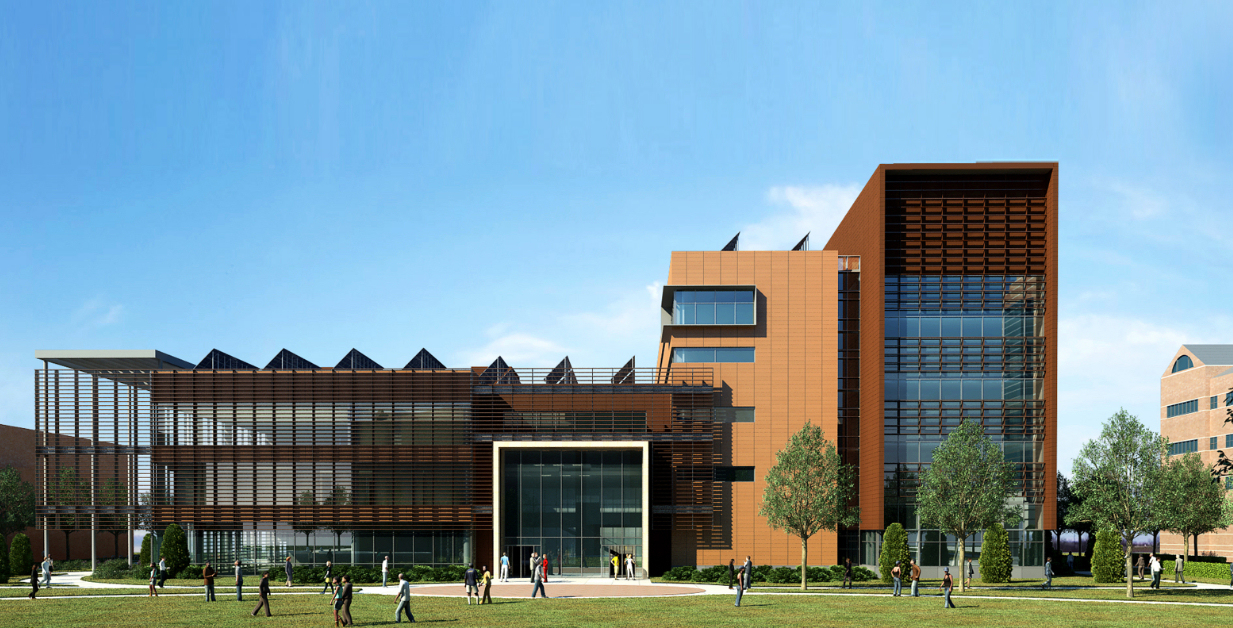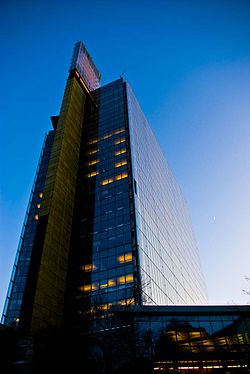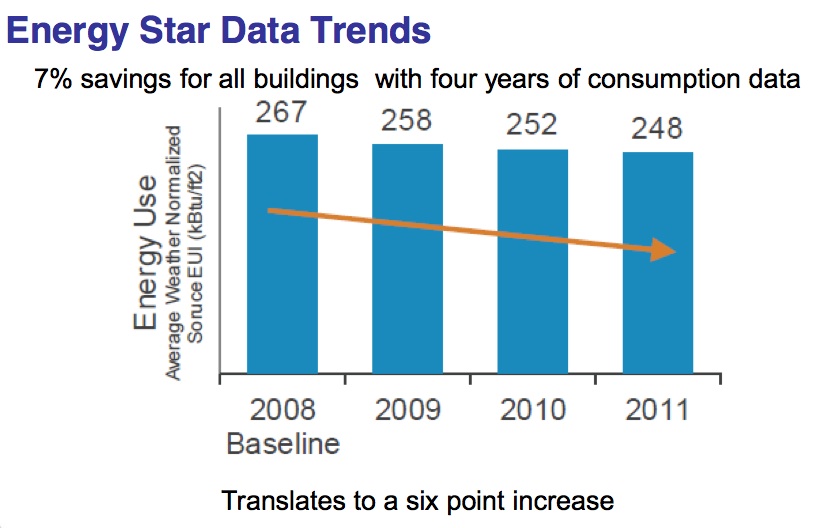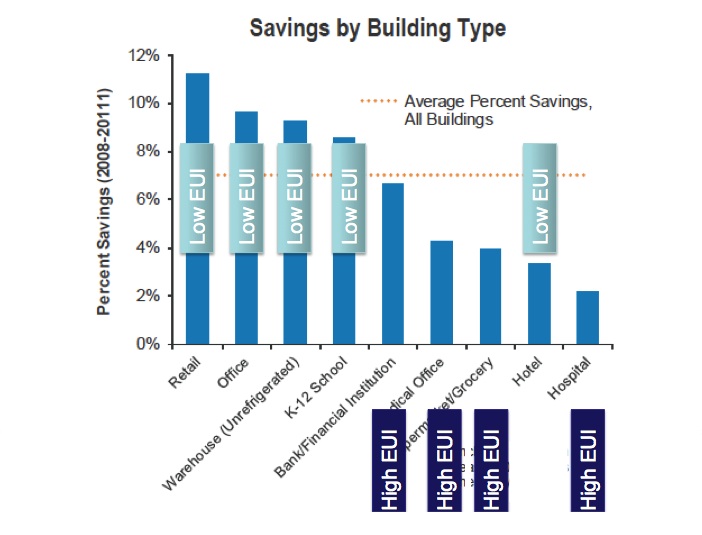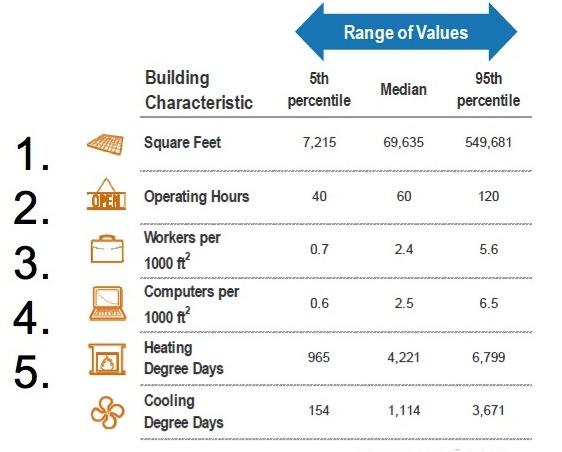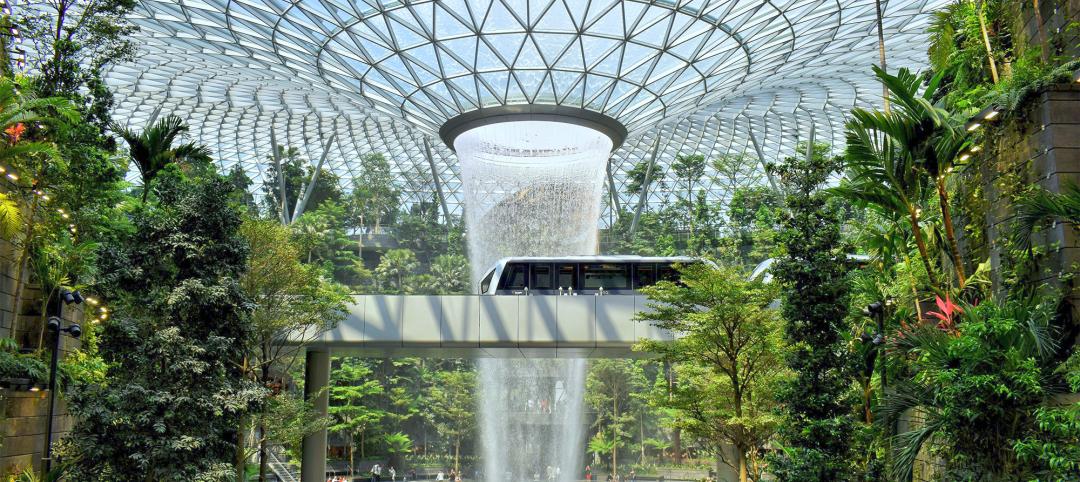The first annual BUILDINGChicago/Greening the Heartland conference and expo kicked off yesterday at the Holiday Inn Chicago Mart Plaza. During the show, more than 125 speakers and panelists will deliver 72 continuing education sessions to hundreds of AEC professionals.
The BD+C editorial team is here en masse to bring you this real-time report from the show. Here’s is our recap of the education sessions from Day 3 (read our reports from Day 1 and Day 2):
Slideshow: Here's a taste of the action happening at BUILDINGChicago
Kyle Burkhart, Project Manager with DJK Custom Homes (middle), was one of two BUILDINGChicago attendees to win an iPad Mini. BD+C's Harry Urban (left) and Zurich Esposito, Executive VP of AIA Chicago (right), presented the gift.
Video: Sound is 'completely neglected' in modern architecture
Massive brownfield project will be a new development model on Chicago’s South Side
A conceptual plan for Lakeside, an urban redevelopment plan that would turn an old U.S. Steel plant into a 600-acre mixed-use neighborhood on Chicago's South Shore. Plan courtesy of Sasaki Associates.
U.S. Steel and McCaffery Interests are collaborating on the joint venture Lakeside—a 600-acre mixed-use neighborhood on the site of the old South Works plant, which is located on the shore of Lake Michigan near the Indiana border. The steel company stopped operations there in 1992, and planning for redevelopment has been ongoing for more than a decade. Participants include Skidmore, Owings & Merrill, Sasaki Associates, multiple private firms serving in an advisory capacity, and organizational partners such as Argonne National Laboratory and the University of Chicago.
The southward extension of Lakeshore Drive, a fundamental driver of the project, has just been completed and will be celebrated with a public event in late October. The new Lakeside neighborhood is envisioned as a showcase for next-generation IT infrastructure, as well as innovative methods for power generation and distribution. Stormwater management on the porous property, which was created from landfill, includes the goal of returning a significant amount of clean water to Lake Michigan.
McCaffery’s Natsua Mabwa predicts that the first buildings in Phase 1 will be constructed within three years, encompassing a mix of retail and residential. The overall Phase 1 plan for the brownfield site includes about 3 million sf, consisting of about 50% residential, 25% retail, and 25% institutional and office. Projected components include a charter high school, a YMCA with a strong focus on aquatic sports and early childhood services, an Innovation Center with a business incubator, computational research facility, and data center, and a mix of townhomes and apartments.
Public amenities will include a generous amount of park space, recreational areas, and “finger parks” that are narrow and integrated with the stormwater management plans. The design also includes construction of new wetlands areas at the shoreline, which currently consists of a fairly steep dropoff behind an artificial barrier.
The developers are also working cooperatively with the Illinois Department of Natural Resources’ Mud-to-Parks program, repurposing nutrient-rich mud from the bottom of Lake Peoria, 168 miles away, as the basis for lakefront parks. The lake needs dredging for navigation due to sedimentation issues, and the mud is a valuable resource for the development of recreational space.
As a long-term project, the developers hope to persuade the Obama administration to choose the site as the home of a presidential library and museum. The neighborhood is registered with the LEED-ND program.
Modeling integral part of U.S. Bank Building remodel
When it was built in 1973, the Bruce Graham-designed U.S. Bank Building in Madison, Wis., was architectural eye candy with its all-glass façade and abundant natural light.
However, by today’s standards, numerous inefficiencies adversely affected utility costs and made the building unappealing to potential tenants. The single-pane glass allowed too much direct sunlight and heat to penetrate the space, and the HVAC system was noisy and inefficient. Also, the floor plan of the building was not compatible with the multi-tenant setup the owner envisioned.
The U.S. Bank put the building on the market in 2007 and in January 2008 it was purchased by Urban Land Interests (ULI).
ULI had several goals for the building, which included improving performance and improving the tenant experience. “The design process should be collaborative,” says Matthew Darga, commercial operations manager at ULI. The Building Team—comprised of ULI, and Chicago-based firms Valerio Dewalt Train (architects) and Environmental Systems Design (ESD) (engineers)— hoped to repurpose the building as a Class A office building on Madison’s prominent Capitol Square.
Using the Department of Energy’s E-quest modeling software, ESD used building’s existing electricity, gas, and water consumption data over 10 years to create an energy model that would accurately predict the changes in consumption based on modifications to the building. Typically, these models are only used for comparison.
The Building Team was able to input any number of modifications into the model and accurately determine the energy and cost savings. The model allowed the team to find not only benefits of individual improvements, but also the savings resulting from implementing a combination of several options.
Ultimately, thanks to a combination of architectural, HVAC, and other miscellaneous upgrades, the building is realizing electricity, gas, and water savings of 35%, 50%, and 85%, respectively, and has achieved LEED Gold certification.
Energy optimization strategies guide design of new academic building at University of Illinois
A new building under way at the University of Illinois at Urbana-Champaign will house the Department of Electrical and Computer Engineering (ECE) when it opens for the fall 2014 semester. The ambitious project (it’s targeting LEED Platinum) and its energy optimization strategies were highlighted in a session Wednesday morning at the BUILDINGChicago conference, led by the Building Team of SmithGroupJJR, KJWW Engineering, and the Illinois Capital Development Board.
Collaboration between team members and the university was paramount when approaching the project. “To create a high performance that was worthy, it required an integrated team of architects, engineers, and in-state representation from the onset,” explained SmithGroupJJR’s Coty Ekhoff.
The task called for creating a high-performance building for one of the largest academic departments in the United States, according to University of Illinois professor Philip Krein, PE. It would have to take into consideration not only the foot traffic of everyday students and faculty, but also the specialized research and instructional laboratories.
Strategies for energy efficiency, many of which were input by members of the university, include a chilled beam cooling system and photovoltaic arrays on the roof.
High-performance LED lighting was also selected to illuminate the building. This deviated from the university’s standard of using fluorescent lighting, but with the inventor of LED having been an ECE professor at Illinois, “we thought it was still appropriate,” Ekhoff said. Other deviations from university practices include the use of terra cotta on the building’s exterior instead of brick as seen in neighboring buildings.
“In the end, the team put together a high-performance building that still fits into the campus despite being different,” remarked David Bodenschatz, senior engineer at KJWW Engineering.
College of Lake County puts sustainability at the head of the class
On the heels of the LEED Gold and Silver new construction Joliet Junior College (JJC), the College of Lake County is following suit with its own sustainable campus master plan, as presented at a Wednesday morning BUILDINGChicago/Greening the Heartland session.
In the JJC project, sustainability was, “not necessarily an afterthought, but was not the main focus of the master plan,” according to David Agazzi, vice president of administrative affairs for the College of Lake County. Agazzi worked at JJC at the time of its project. For Lake County, sustainability is at the forefront of its master plan.
Although the college is comprised of three campuses, the majority of the $144 million project is focused on the Grayslake campus, which serves 98% of the college’s 18,000 students. The goal of the project is to reach LEED Platinum certification and for the campus to be off the grid by 2021. A geothermal system will supply energy for the entire campus, and on-site sources will generate renewable energy.
Because of the college’s green curriculum effort, “we want everything we teach in classrooms to be visible on the campus,” says Agazzi. The geothermal system will be exposed and buildings will have roof access, allowing students to see the green roofs and photovoltaic panels in action.
Ambitious plan will bring healthcare-based community development to Chicago’s Southwest side
Saint Anthony Hospital, a faith-based community hospital, is the anchor tenant of a new 11-acre mixed-use campus that will serve more than 400,000 residents of turbulent Chicago neighborhoods, including Little Village, North Lawndale, Pilsen, and Back of the Yards. Rather than just building a replacement for its century-old and outdated facility nearby, Saint Anthony has led the development of an ambitious neighborhood revitalization plan with partners Jones Lang LaSalle and HDR.
Ultimately, the 11-acre Focal Point Chicago site near 31st and Kedzie—donated by the city to the Chicago Southwest Development Corporation, a nonprofit founded to develop and operate the property—will include not only a hospital and medical office building, but also an alternative charter high school, a vocational school, extensive recreational facilities, a parking garage, about a quarter million square feet of commodity and specialty retailing, and restaurants and hospitality facilities, including rentable space for banquets and meetings.
Saint Anthony’s Christine Raguso described the intensive research process that led to the planning and programming, including months of interviews, surveys, and other types of outreach with community leaders, residents, hospital staff, economic advisers, government officials, and other potential stakeholders. The current program directly reflects aspects that the community emphasized, as functions of a truly game-changing development. For instance, the child care center will be a 24-hour facility, reflecting the fact that employed residents may have two or more jobs, including night work.
The project should break ground next year, with projected completion in 2017. About 2,100 construction jobs will be created, and along with thousands of new long-term jobs in the neighborhood. A combination of philanthropic funding, fundraising, tax incentives, and grants will be used, along with some debt financing. Rental fees from the hospital, medical office tenants, and retailing will provide ongoing funding for the social services component of the development.
The planning reflects a larger definition of human health and wellness, says HDR’s Abigail Clary. “No longer is the goal of healthcare preventing death; the goal is preventing disease,” she says. “The plan for this project, which is not a healthcare project, is to reflect the interaction of biology, environment, and behavior, acknowledging the larger human experience. People’s environment, including the availability of jobs and support, can change biology.”
Raguso and Joseph Caprile of owners’ rep Jones Lang LaSalle said the project is the first of its kind in the U.S., and will be closely watched by other communities and healthcare organizations. “Our third party pro forma examined the funding model and has verified that it works,” says Raguso. “Others will want to duplicate this model.”
Yudelson encourages Building Teams not to settle for ‘relatively better’
Manitoba's Hydro Place building takes great advantage of passive solar technology, acknowledging the area's abundant clear sunny days with very cold temperatures. The south-facing atrium is humidified in winter by water distribution on 300 Mylar strips, which also serve as an art feature. In summer, the strips help cool the space via condensation.
Keynote speaker Jerry Yudelson gave attendees a virtual international tour in “The World’s Greatest Buildings: What Do They Know That We Don’t?” Instead of settling for buildings that are “relatively better” than some standard (typically, ASHRAE 90.1), Yudelson encourages Building Teams to pick concrete goals for energy and water use (particularly, better than average Energy Use Intensity numbers, or kBtu/sf, and actual targets for water consumption and carbon emissions.)
Yudelson profiled current projects in Western Europe, the Asia Pacific, and Canada that exhibit exemplary green design. In many cases, the European projects feature natural ventilation and heavy use of solar energy. Many Asian projects are cooling-driven, forcing creative thinking about issues such as maximzing daylighting while controlling heat gain.
In Australia, water use is a significant issue; Yudelson pointed out that today’s greenest buildings Down Under are only using a third of the water that comparable “sustainable” American projects use. One Bligh, an office building in Sydney, employs “sewage mining”—taking effluent from the nearby street plumbing, purifying it in the basement, and using the resulting clean water for cooling tower makeup water.
Yudelson strongly encouraged teams to shoot for EUI numbers that are below current averages for good green design in North America, ~45, and to chose a more ambitious target, such as 35. He points out that the best buildings worldwide have attained targets well under 20, and that the new Bullitt Center in Seattle (admittedly, a mild climate) has a projected EUI of about 16. More AEC firms could benefit by sending young leaders on trips to other countries to study green design, he says.
In addition, Yudelson recommends serious consideration of source energy goals, including more sophisticated thinking about all the energy inputs represented in a building. “Carbon emissions count,” he says. “Nature doesn’t care how much ‘relatively better’ this building is than the dreck that is already out there. Nature only cares about the total carbon dioxide in the atmosphere. As we make the envelope and systems more efficient, and do a better job with our lighting and our plug loads, the embodied emissions in building materials have to become a more important part of our thinking. This is hard to measure but crucial.”
What's the ROI on building energy benchmarking?
As more states and cities require commercial and residential building owners to regularly report their building energy usage data, owners are starting to ask: what's in it for me?
Plenty, according to Peter K. Dahl, PhD, LEED AP BD+C O+M, Sustainability Specialist with Sebesta Blomberg, who presented on the topic at BUILDINGChicago/Greening the Heartland. Besides being able to more accurately track and assess their performance against the competition, real estate managers and owners can expect to see energy savings over time--provided that they act on the data.
Dahl cited a recent EPA study of Energy Star-rated projects with at least four years of benchmark data. The findings: building owners saw an average energy reduction of 7%. EPA equated this to 2.4% in annual energy cost savings and a six-point increase in their Energy Star rating.
"State and local policies are coming, and coming quick," said Dahl, adding that 14 states and eight major cities currently have some sort of energy disclosure program. Chicago is the next major metro area looking mandate energy benchmarking. "The Energy Star program is nice, but it's voluntary. These disclosure mandates are helping to get more performance information out to the marketplace."
Here are more findings from the EPA report (Source: U.S. EPA (2012) Energy Star Portfolio Manager DataTrends):
MORE NEWS TO COME THROUGHOUT THE DAY...
Related Stories
Airports | Apr 18, 2024
The next destination: Passive design airports
Today, we can design airports that are climate resilient, durable, long-lasting, and healthy for occupants—we can design airports using Passive House standards.
Airports | Feb 13, 2024
New airport terminal by KPF aims to slash curb-to-gate walking time for passengers
The new Terminal A at Zayed International Airport in the United Arab Emirates features an efficient X-shape design with an average curb-to-gate walking time of just 12 minutes. The airport terminal was designed by Kohn Pedersen Fox (KPF), with Arup and Naco as engineering leads.
Urban Planning | Feb 5, 2024
Lessons learned from 70 years of building cities
As Sasaki looks back on 70 years of practice, we’re also looking to the future of cities. While we can’t predict what will be, we do know the needs of cities are as diverse as their scale, climate, economy, governance, and culture.
Products and Materials | Jan 31, 2024
Top building products for January 2024
BD+C Editors break down January's top 15 building products, from SloanStone Quartz Molded Sinks to InvisiWrap SA housewrap.
Airports | Jan 30, 2024
Rafael Viñoly Architects’ design for the new Florence, Italy, airport terminal will feature a rooftop vineyard
At Florence, Italy’s Aeroporto Amerigo Vespucci, the new international airport terminal will feature a fully operating vineyard on the facility’s rooftop. Designed by Rafael Viñoly Architects, the terminal is expected to see over 5.9 million passengers annually. Renderings for the project have recently been released.
Airports | Jan 15, 2024
How to keep airports functional during construction
Gensler's aviation experts share new ideas about how to make the airport construction process better moving forward.
Airports | Dec 4, 2023
4 key innovations and construction trends across airport design
Here are some of the key trends Skanska is seeing in the aviation sector, from congestion solutions to sustainability.
Giants 400 | Nov 13, 2023
Top 60 Airport Facility Construction Firms for 2023
Hensel Phelps, Turner Construction, AECOM, and Walsh Group top BD+C's ranking of the nation's largest airport terminal and airport facilities general contractors and construction management (CM) firms for 2023, as reported in the 2023 Giants 400 Report.
Giants 400 | Nov 13, 2023
Top 65 Airport Facility Engineering Firms for 2023
AECOM, Jacobs, Arup, Burns & McDonnell, and WSP head BD+C's ranking of the nation's largest airport terminal and airport facilities engineering and engineering architecture (EA) firms for 2023, as reported in the 2023 Giants 400 Report.
Giants 400 | Nov 13, 2023
Top 65 Airport Facility Architecture Firms for 2023
Gensler, Corgan, PGAL, and HOK top BD+C's ranking of the nation's largest airport terminal and airport facilities architecture and architecture engineering (AE) firms for 2023, as reported in the 2023 Giants 400 Report.




